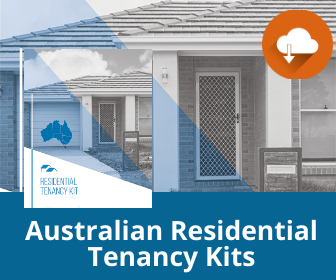If you are negotiating a lease, it’s important to be across the contractual provisions of your Agreement. A Tenancy Agreement sets out the landlord and tenant’s rights and obligations and provides a solid foundation for an ongoing professional relationship. In this article, we’ll outline some of the key terms in a Tenancy Agreement that help to prevent conflict between tenants and landlords.
Please note that the substance of these terms may vary depending on where you reside. For that reason, we recommend checking with the relevant Residential Tenancy laws in your state or territory before entering into a Tenancy Agreement.
Quiet Enjoyment
In the context of a lease, quiet enjoyment is the tenant’s right to the undisturbed use and enjoyment of property. Such a right helps indicate when an Agreement is a lease rather than a mere license to occupy. This is because quiet enjoyment confers the exclusive possession of the premises upon a tenant.
The right also ensures that tenants can enjoy their use of the land without substantial interference from the landlord. What the law regards as ‘substantial interference’ will depend on the tenant’s use of the premises.
However, some common scenarios include:
- Entering the premises without notice or prior agreement;
- Dictating how many visitors a tenant can have;
- Shutting off the tenant’s electricity or water supply; or
- Conducting an open house without the tenant’s consent.

Most leases will include an express right to quiet enjoyment, meaning that the right is set out in the text of the Agreement. The following is an example of the typical wording used in a quiet enjoyment clause:
“The LANDLORD must take all reasonable steps to ensure that the TENANT has quiet enjoyment of the premises.”
Even if your lease does not contain a quiet enjoyment clause, the right will arise by implication. Under common law, the implied covenant for quiet enjoyment also places an obligation on the landlord to ensure the tenant’s possession of the property is free from interference or interruption.
Most people are unlikely aware of the quiet enjoyment obligations implied by law. Therefore, it is advisable to include the right as an express term of the Agreement instead. This eliminates any element of surprise and ensures both parties are fully across their rights and obligations.
Right to Entry
Although the tenant maintains a right to quiet enjoyment, the Tenancy Agreement should also allow the landlord to enter the premises – so long as they act within the law.
There are specific reasons that warrant the landlord’s right to entry. In Victoria, these reasons include:
- Undertaking a routine inspection to make sure the property is in good condition;
- Making repairs;
- Showing the property to people who might want to rent it or buy it in the future;
- Showing the property to a professional valuer or real estate agent;
- Taking photos or making videos to advertise the property;
- Having reasonable grounds to believe the renter has broken their legal obligations under the lease Agreement; and
- Inspecting the property for VCAT proceedings if a renter has applied to vary the Agreement because of family violence.
If a landlord does intend to enter the premises for one of the above reasons, he or she must provide the tenant with reasonable notice. The minimum notice period will depend on why the landlord requires access to the property. For example, landlords in Victoria must provide tenants with seven (7) days notice if they intend to carry out a routine inspection of the premises. All our Premium Residential Tenancy Kits contain this an other notices to help you manage your rental.
reasons, he or she must provide the tenant with reasonable notice. The minimum notice period will depend on why the landlord requires access to the property. For example, landlords in Victoria must provide tenants with seven (7) days notice if they intend to carry out a routine inspection of the premises. All our Premium Residential Tenancy Kits contain this an other notices to help you manage your rental.
A Tenancy Agreement may also provide a tenant with the right to refuse the landlord’s entry if:
- The visit isn’t within business hours;
- The landlord hasn’t given written notice; or
- The landlord failed to give adequate notice within the required time frame.
Repairs and Maintenance
Disputes often arise between landlords and tenants when it is unclear who is responsible for the general maintenance and structural repair of the property. Therefore, to minimise unnecessary conflict, it’s a good idea to set this out in your lease.
Most Tenancy Agreements will distinguish between:
- Urgent repairs; and
- Non-urgent repairs.
Urgent repairs include things such as a broken or blocked toilet system, gas leak, burst water service, flood damage and any other fault or damage in the property that makes it unsafe or insecure. Your tenant must contact you immediately to request an urgent repair, and you must arrange for the repair as soon as practicable.
Non-urgent repairs generally refer to any fault or damage that results from fair wear and tear. Your tenant must inform you of the need for any non-urgent repairs as soon as they become aware of any problems or damage to the property.

As the owner of the premises, you are responsible for its maintenance and general upkeep. For that reason, you cannot include a condition in the Tenancy Agreement that requires the tenant to bear the costs of repairs.
The only situation where you may compel the tenant to foot the bill for repairs is when the tenant caused the damage or fault. In this scenario, the tenant can opt to have the costs of repair taken out of their security deposit instead.
Changes to the Property
A Tenancy Agreement should also provide certain rules about the modifications a tenant can make to a property. These rules will vary depending on the type of rental property and the length of the lease.
Tenants must typically obtain consent from their landlord or real estate agent in order to make any changes to the property. For instance, a tenant will require permission before:-
- Painting any walls or surfaces;
- Installing cable television connections; and
- Installing Air conditioning.
Thanks to recently passed laws in Victoria, tenants can now make specific modifications to a rental property without obtaining permission from their landlord. These changes, however, are limited to minor things such as installing picture hooks or wall anchors to secure items of furniture.
The Agreement may also set out specific consequences if the tenant makes any modifications that the landlord does not agree to (or that are not covered in the list of changes allowed). In most cases, the landlord will provide the tenant with a written Notice of Breach. This notice may order the tenant to pay costs or restore the property to its original condition.
Australian Residential Tenancy Lease Agreements
R.P. Emery & Associates produces up-to-date Australian Residential Tenancy Lease Agreement templates to suit the needs of professional property managers or investors.
Tenancy Lease Agreement templates to suit the needs of professional property managers or investors.
Each document complies with the Residential Tenancies Legislation in your respective state or territory. All that’s left for you to do is download your Agreement, insert the relevant details and print – it’s that easy!
Our Premium Kits also contain various legally prescribed forms and letter so you can communicate properly with your tenant during the tenancy.

